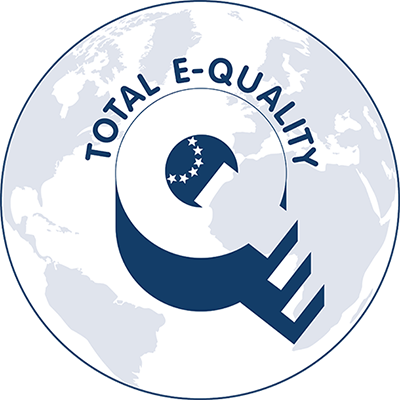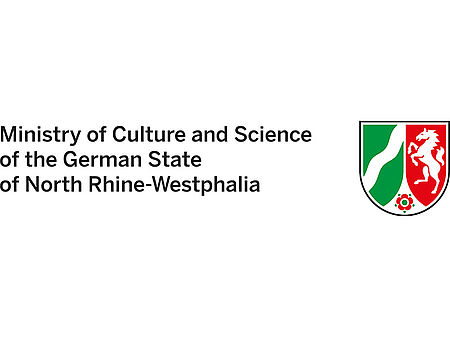Generative AI
When we talk about AI today, we usually mean generative AI tools such as ChatGPT, Perplexity, Claude or Mistral. Built on machine learning technology, these systems respond to natural-language instructions – known as prompts – by “generating” suitable text or other forms of output.
Almost all of the tools currently on the market are based on large language models (LLMs), which are trained on vast amounts of text to learn statistical patterns in language and produce context-appropriate output when prompted.
Such tools can help researchers communicate their scientific findings more clearly and effectively.
Although often described as “artificial intelligence”, these tools do not actually engage in any form of cognitive or creative process. Instead, they follow a mechanical decision-making process grounded in probability and, to some extent, chance. As a result, the texts they generate do not meet the threshold of originality required for copyright protection. Moreover, because these tools cannot assess the factual accuracy of their own output, rigorous fact-checking remains essential.
It is worth noting that the use of generative AI remains an active topic of debate in all the life science disciplines. Ultimately, these communities need to reach a consensus on whether, where and under what conditions such tools should be used. In many disciplines, that process of negotiation is still very much ongoing.
Below, we summarise the main points on which broad agreement has already been reached across the various communities (as of October 2025).
Applications
Using AI to prepare manuscripts
Generative AI can be a helpful tool at various stages of manuscript preparation, for example:
- brainstorming ideas and conducting preliminary research;
- developing a research strategy and evaluating search results;
- summarising texts for personal reference after reviewing the literature;
- revising drafts to improve grammar, spelling and consistency of the writing style and citation format;
- supporting data analysis and visualisation.
All AI-generated material should be carefully and critically reviewed before being put to further use. Particular care is needed when checking causal relationships.
Generative AI tools should not be used for the following purposes:
- translating texts from other languages and incorporating them verbatim into your own work;
- copying AI-generated passages directly into a manuscript without reviewing or adapting them;
- filling logical gaps in an argument or generating suitable citations to support a statement.
AI systems can easily produce inaccurate or fabricated content in these areas.
Challenges and limitations
Current AI tools remain prone to error for a number of reasons, including the following:
- The model may not have been exposed to enough relevant material to answer a question or perform a task accurately, leading to incorrect or incomplete output.
- These tools reproduce patterns found in their training data without assessing whether statements are true or false. Unless this data has been carefully curated, it may contain errors, which will simply be reproduced by the AI without comment or reflection. For this reason, LLM-based systems are sometimes described as “stochastic parrots”.
- Generative AI simply imitates the behaviour it has been asked to display and may “hallucinate” and even invent information. For example, when asked to provide references, it might generate plausible-looking but fictitious citations rather than citing genuine sources.
- The size, diversity and quality of the training corpus directly affect the model’s output. If the training data lean heavily toward a particular perspective, the resulting text will reflect that imbalance – a phenomenon known as bias.
- Many online tools are continually being retrained, meaning their results may vary over time and cannot be reproduced exactly.
Users typically have little insight into what materials were used to train a particular tool, making it impossible to gauge whether or not it is biased. The same lack of transparency applies to the underlying model, which often functions as a “black box” with no clear explanation of how its results are produced.
Using AI in peer review
Many journals explicitly prohibit the use of generative AI tools in the peer-review process – both for writing review reports and, in particular, for analysing manuscripts under review. The concern is that both the manuscript and any AI-generated review could be absorbed into a model’s training data – a risk that current data-protection frameworks cannot reliably prevent. Such use would violate the principles of good scientific practice, since manuscripts must remain strictly confidential, particularly in double-blind reviews.
The only permissible exception is when reviewers use AI to summarise their own notes, provided this does not compromise confidentiality.
Similar principles apply to the review of research proposals. Most funding agencies now provide explicit guidance on whether and to what extent the use of generative AI tools is permitted.
Authorship and good scientific practice
Because generative AI tools generate text using probabilistic modelling rather than through a creative process, they cannot be regarded as authors in any meaningful sense. Accordingly, such tools should never be listed as co-authors on a paper, even for transparency or disclosure purposes. Conversely, authors may not claim copyright over AI-generated text unless they have substantially revised or expanded it, thereby meeting the threshold of originality required for a new creative work.
By contrast, prompts – that is, the instructions entered into an AI tool – may qualify for copyright protection if they exhibit sufficient originality and creative input. Simple or generic prompts, however, do not meet this threshold.
These principles translate into several key guidelines for good scientific practice:
- Every use of generative AI in scholarly writing should be documented to ensure proper disclosure as and when required.
- Passing off AI-generated text as your own work constitutes a breach of good scientific practice. Depending on the prompt, AI systems may reproduce sentences or passages from third-party sources without attribution; incorporating such material without citation amounts to plagiarism.
- Authors remain solely responsible for the content of their manuscripts and publications. This responsibility cannot be transferred to the tool or its developers.
- Any AI-generated bibliographic references must be verified against a library catalogue or scholarly database to confirm that the cited works exist and are correctly attributed.
- Using generative AI in ways that compromise the anonymity of the peer-review process is strictly prohibited.
- Copyrighted material should not be uploaded to AI tools for analysis, as this may infringe third-party rights.
- Using AI tools to fabricate or falsify data – or even to invent entire studies, as is common in so-called paper mills – is fundamentally incompatible with the principles of good scientific practice.
AI policies of scholarly journals and publishers
An increasing number of journals are introducing formal policies that govern whether and how authors and reviewers may use generative AI tools, as well as what must be disclosed. In some cases, these policies also specify the level of detail required in the corresponding disclosure – for example, whether the particular tool must be named, or which sections of the manuscript are affected.
Failure to comply with these policies can lead to rejection of a submitted manuscript or, in the case of published papers, retraction.
The relevant policy can usually be found on the journal’s or publisher’s website. If no policy is in place but the use of generative AI is being considered, authors should contact the editors in advance for clarification.
Using generative AI tools
Choosing a tool
Given the rapid pace of development in this field, detailed comparisons between specific tools would quickly become outdated. This section therefore simply highlights the main factors to consider when selecting an AI tool.
The choice of tool depends first and foremost on the intended purpose. Some are designed to support literature searches, others to draft or refine scholarly texts, or to assist with data analysis. As a rule, tools developed for a clearly defined task tend to deliver more reliable results. We also advise checking whether the tool you are considering has been explicitly created for academic use.
Some citation databases – such as Web of Science and Embase – now include integrated generative AI modules. These can help users formulate search queries, summarise documents or extract and compare data from texts. Because such modules are trained exclusively on the curated and structured content of their respective databases, their output should theoretically be more reliable. However, they typically require an additional subscription and are therefore available only to members of institutions holding the relevant licence.
Cost is another important consideration. Many products are offered in tiered versions: free plans usually limit functionality or restrict usage time and frequency, while full, unrestricted access requires a paid subscription. It is worth checking whether your institution already holds a licence for the tool you intend to use.
Data protection is also a key factor. Users should verify that their rights and privacy are adequately safeguarded, and determine the extent to which usage rights are transferred – particularly whether the provider may reuse submitted material or prompts for other purposes. It is also worth checking whether the tool operates on servers hosted by your own institution or whether your prompts and texts are processed on external servers, especially if those servers are located outside jurisdictions covered by European data-protection standards.
From an open-science perspective, preference may be given to tools whose source code and training data are transparent and, ideally, released under open-source licences.
How to craft prompts
Precision is essential when formulating prompts. Be as specific as possible, and always indicate that the content is intended for an academic or scientific context. Some tools can cite the sources used to generate their output; if this doesn’t happen automatically, request it explicitly in your prompt. Doing so makes verification easier and helps prevent plagiarism.
Online prompt libraries are becoming increasingly common, providing collections of prompts that can be adapted and reused. Examples from the New York Institute of Technology and Maastricht University are linked in the navigation panel on the right. In line with good scientific practice, always credit the original source when adapting another person’s prompt.
Many research institutions now offer courses on scholarly writing and generative AI, often including overviews of which tools are best suited to particular tasks.
Ethical implications
Training and operating generative AI systems consumes vast amounts of resources such as electricity and water. Before using these tools to address a problem or complete a task, it is important to consider whether they truly provide added value, increase efficiency or save time.
See also:
Urheberrecht und Wissenschaft: Was muss ich als Autor:in wissen?
Gute wissenschaftliche Praxis, wissenschaftliches Fehlverhalten und wissenschaftliche Integrität: Was hat es damit auf sich?
Peer Review: Warum ist es wichtig?
Erstellung eines Manuskripts für eine wissenschaftliche Publikation: Was gilt es dabei zu beachten?
Contact

Dr. Jasmin Schmitz
Phone: +49 (0)221 999 892 665
Send mail
References
LLM Literacy Materialien (abgerufen am 05.11.2025)
Yoo, J.-H. (2025). Defining the Boundaries of AI Use in Scientific Writing: A Comparative Review of Editorial Policies. Journal of Korean Medical Science, 40(23).
Jeyaraman, M., & Jain, V. K. (2025). AI in scientific publishing: Revolutionizing research with caution. Journal of Clinical Orthopaedics and Trauma, 61, 102904.
Verch, U. (2024). Per Prompt zum Plagiat? API Magazin, 5(1).
Related Links
Kasprzik, A. (2025). Die KI(rche) im Dorf lassen. OPUS Publikationsserver
Generative KI - jenseits von Euphorie und einfachen Lösungen von 2024, Nationale Akademie Der Wissenschaften Leopoldina.
Web of Science | Clarivate - AI Reasearch Assistant
AI Prompt Library - For educators and students. vom 14.08.2025 Maastricht University Library.
LibGuides: Prompt Engineering for Academic Research: Prompt Library. vom New York Institute of Technology
Further information
Arning, U. (2024). Künstliche Intelligenz und ChatGPT: Über die Zukunft des wissenschaftlichen Publizierens – Jubiläumssymposium zu 20 Jahren German Medical Science. Information – Wissenschaft & Praxis, 75(2–3), 129–137. (German only)




